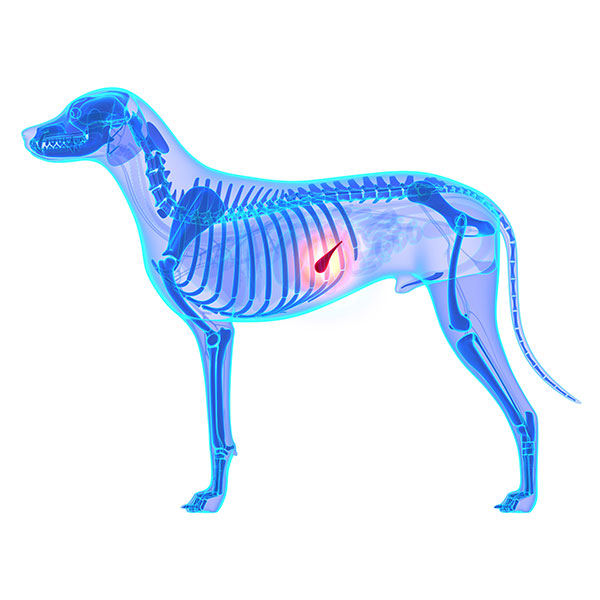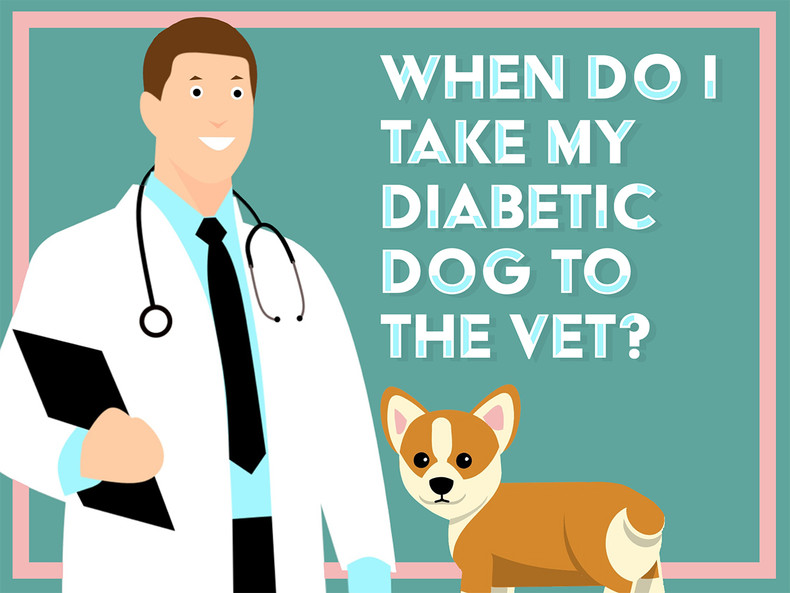When Do I Take My Diabetic Dog to the Vet? Part 1
Thanks Angelique for the topic for today’s post. Today we will talk about when to take your Diabetic pup to the vet. We are talking about issues that are specific to this diagnosis. There are the usual things that you would take your pup in for and those don’t change, but when it comes to Diabetic Dogs, there are a few things to look for because the earlier you catch them, the easier and more cost effective they are to treat.
Pancreatitis:

If your pup is not interested in food, is vomiting or having diarrhea and his or her tummy is painful, you may be dealing with pancreatitis. How can you tell if your dog’s abdomen is tender? The physical signs are that they are tucking their tail and perhaps hunching (arching) their back, they may be having trouble getting comfortable. If you see any of these signs, you’ll want to feel your pup’s belly area and watch for flinching or any other indication that it is hurting them. Here’s where the pancreas is so you know where to feel for tenderness.
Pancreatitis is very painful and caught early, very treatable.
What is pancreatitis? Very simply, it is the inflammation of the pancreas. Diabetic dogs are prone to pancreatitis so we as their caregivers must be diligent in watching for the signs of this complication. This is not something that you can treat at home, so if you see any of these symptoms in your “sugar baby”, please take them in to be looked at.
Treatment for pancreatitis is IV fluids (in severe cases), anti-nausea medication (typically Cerenia), and resting the GI tract. We all know that resting the GI tract isn’t really possible for our dogs as they need to eat to get their insulin. So, the next best thing is to feed them bland food for a few days. An example would be chicken breast and overcooked rice, easily digestible and includes a protein and a carb for their insulin to work with. If you caught this early, and get to take your pup home, I’d ask for injectable Cerenia. Let’s face it… you KNOW how to give an injection as evidenced by the fact that you are already doing it twice a day! My preference for the injectable is because we know that their tummy is upset and I’d rather know that the meds are going in and staying in therefore increasing the probability that they will eat the bland diet. High BG (Blood Glucose) can trigger pancreatitis or make an existing case worse, so making sure that they will eat so they can get their insulin will work in your favor here.
How do you avoid pancreatitis? Pay very close attention to the fat content of ANYTHING that goes in your pup’s mouth. Remember that we determine the true fat content of our pups foods on a Dry Matter Basis (refer back to the “What Do I Feed My Diabetic Dog” entry). Really try to be diligent with food as too much fat is typically the reason for pancreatitis, and once they have had it, they can now be prone to flares. A helpful hint here is to be sure that you don’t leave any food within reach of your Diabetic dog because “sneaky snacks” are often the culprit in causing pancreatitis.
Next time we will look into more signs to watch for that would suggest a vet visit is needed for your Sugar Baby.
If you have any thoughts or ideas for topics that you’d like to see covered here, please feel free to comment below or send me an email at NancyForPetTest@pharmasupply.com. As always, please “like” this blog post or any of the others that have helped you or just refreshed your memory.
Look for new posts every Monday, Wednesday and Friday!
Until next time…

